Read These Books: Public Speaking, Media Training & Crisis
Note: This page is regularly updated with new books.
I’ve read dozens of books that focus on media training, crisis management, body language, and public speaking. Many of them are quite good—but a select few have become favorites.
In this post, I list some of my all-time favorites. This isn’t a comprehensive list, as there are surely great books I haven’t gotten around to reading yet. So if you have favorites that are not on this list, please leave them in the comments section below. (And if you’re an author, feel free to send me a copy of your book for possible review.)
For more information about any of these books, you can click on the book title or the image of the book cover.

PUBLIC SPEAKING
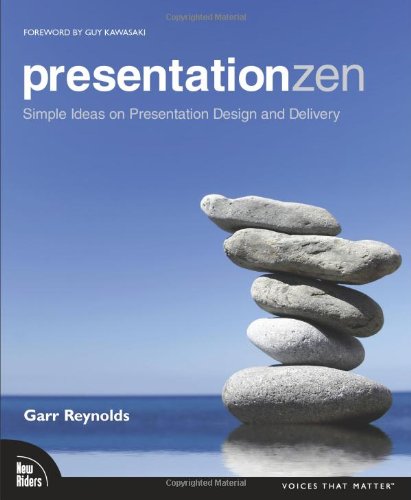 Presentation Zen: Simple Ideas on Presentation Design and Delivery by Garr Reynolds: Many communications consultants advise their clients not to use PowerPoint. I disagree with that absolutist stance, since the problem isn’t the tool, but the use of that tool. Garr Reynolds gets that, and strikes the perfect balance by offering a visually stunning guide that helps presenters design minimalistic PowerPoint slides that enhance presentations and reinforce verbal points. It’s no exaggeration to say that this book changed the definition of “best practices” for presentations that use PowerPoint.
Presentation Zen: Simple Ideas on Presentation Design and Delivery by Garr Reynolds: Many communications consultants advise their clients not to use PowerPoint. I disagree with that absolutist stance, since the problem isn’t the tool, but the use of that tool. Garr Reynolds gets that, and strikes the perfect balance by offering a visually stunning guide that helps presenters design minimalistic PowerPoint slides that enhance presentations and reinforce verbal points. It’s no exaggeration to say that this book changed the definition of “best practices” for presentations that use PowerPoint.
 Presentation Zen Design: A Simple Visual Approach to Presenting in Today’s World by Garr Reynolds: This book is the perfect companion to Presentation Zen. The key difference is that Reynolds goes into more depth about design in this book, offering practical advice about designing visually stunning slides and choosing the right colors, fonts and images. More than anything I’ve ever read, this book made me excited about design—and inspired me to completely overhaul our company’s training slides.
Presentation Zen Design: A Simple Visual Approach to Presenting in Today’s World by Garr Reynolds: This book is the perfect companion to Presentation Zen. The key difference is that Reynolds goes into more depth about design in this book, offering practical advice about designing visually stunning slides and choosing the right colors, fonts and images. More than anything I’ve ever read, this book made me excited about design—and inspired me to completely overhaul our company’s training slides.
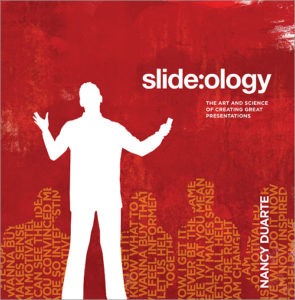 Slide:ology: The Art And Science of Creating Great Presentations by Nancy Duarte: This book offers a master’s class in visual design. Everything about this book shows Ms. Duarte’s creativity: the thoughtful layout, the compelling images, and the sharp content. Duarte offers readers hundreds of images to help guide their slides, goes into depth on color selection, and details the best way to conceive a visual presentation. If you care about presenting well-designed slides, put this book on your reading list.
Slide:ology: The Art And Science of Creating Great Presentations by Nancy Duarte: This book offers a master’s class in visual design. Everything about this book shows Ms. Duarte’s creativity: the thoughtful layout, the compelling images, and the sharp content. Duarte offers readers hundreds of images to help guide their slides, goes into depth on color selection, and details the best way to conceive a visual presentation. If you care about presenting well-designed slides, put this book on your reading list.
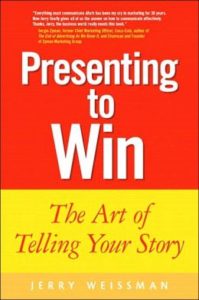 Presenting to Win: The Art of Telling Your Story by Jerry Weissman: Jerry Weissman’s classic book offers a detailed, almost technical, guide to public speaking. This is the type of book you’ll want to highlight and come back to before every speech you ever deliver; although you should read it cover-to-cover, you’ll eventually get more out of it as a must-have reference title. Mr. Weissman’s examples come almost exclusively from the world of high-tech IPO road shows, but anyone in any sector can learn just as much as his tech clients.
Presenting to Win: The Art of Telling Your Story by Jerry Weissman: Jerry Weissman’s classic book offers a detailed, almost technical, guide to public speaking. This is the type of book you’ll want to highlight and come back to before every speech you ever deliver; although you should read it cover-to-cover, you’ll eventually get more out of it as a must-have reference title. Mr. Weissman’s examples come almost exclusively from the world of high-tech IPO road shows, but anyone in any sector can learn just as much as his tech clients.
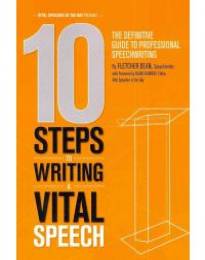 10 Steps to Writing a Vital Speech by Fletcher Dean: This short volume packs a punch. In just 120 pages, Dean offers more nuggets than most books three-times the size. Among other topics, Dean offers a systematic technique for deciding when (and when not) to use PowerPoint, teaches readers how to use persuasive techniques to move an audience to action, and provides specific ideas about how to structure a speech. Although this is labeled as a book about speech writing, most of the ideas here also apply to unscripted presentations.
10 Steps to Writing a Vital Speech by Fletcher Dean: This short volume packs a punch. In just 120 pages, Dean offers more nuggets than most books three-times the size. Among other topics, Dean offers a systematic technique for deciding when (and when not) to use PowerPoint, teaches readers how to use persuasive techniques to move an audience to action, and provides specific ideas about how to structure a speech. Although this is labeled as a book about speech writing, most of the ideas here also apply to unscripted presentations.
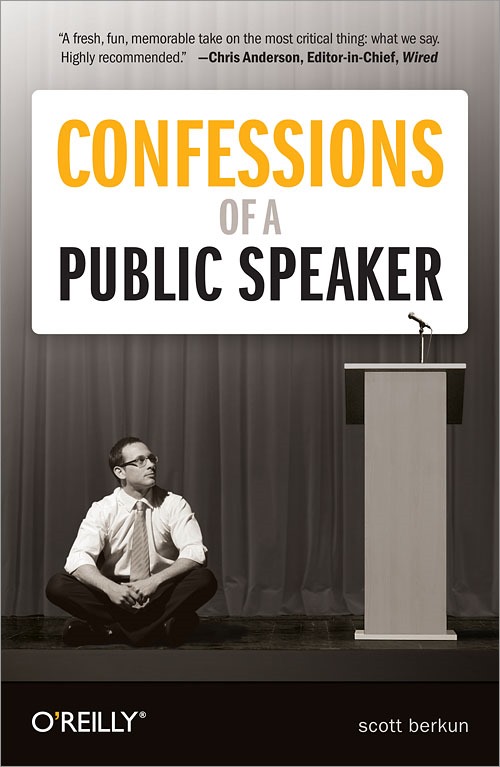 Confessions of a Public Speaker by Scott Berkun: This book isn’t a public speaking book, at least not in the traditional sense. It’s not particularly granular or tactical—you won’t find much here about proper posture, slide design, or ways to begin a speech, for example. Instead, this book focuses on some of the bigger issues speakers get wrong, such as failing to maintain the audience’s attention, work a tough room, or manage their own fear. Oh, and it’s the funniest book about public speaking I’ve ever read. (Read my full review here.)
Confessions of a Public Speaker by Scott Berkun: This book isn’t a public speaking book, at least not in the traditional sense. It’s not particularly granular or tactical—you won’t find much here about proper posture, slide design, or ways to begin a speech, for example. Instead, this book focuses on some of the bigger issues speakers get wrong, such as failing to maintain the audience’s attention, work a tough room, or manage their own fear. Oh, and it’s the funniest book about public speaking I’ve ever read. (Read my full review here.)
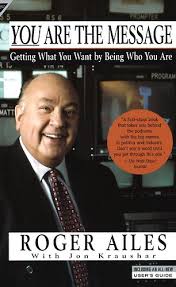 You Are The Message by Roger Ailes: A true classic chock full of smart thinking and “a ha!” moments. Before Roger Ailes was hired to run the Fox News Channel, he was a high-profile communications consultant (he coached Ronald Reagan in 1984 before the second presidential debate that cemented his re-election). If you want to learn how to be a more effective public speaker, this is a perfect place to begin. This book was originally released in 1989, but it’s still as fresh and relevant as anything being published today (with the exception of a few pages that offer a rather outdated view of women in the workplace). [Note: September 2016: Ailes has recently been accused of numerous incidents of sexual harassment in the workplace and was forced out of his job at Fox News. I decided to leave this book on this list because much of the advice in his book is still sound, even if he doesn’t meet the test of good character.]
You Are The Message by Roger Ailes: A true classic chock full of smart thinking and “a ha!” moments. Before Roger Ailes was hired to run the Fox News Channel, he was a high-profile communications consultant (he coached Ronald Reagan in 1984 before the second presidential debate that cemented his re-election). If you want to learn how to be a more effective public speaker, this is a perfect place to begin. This book was originally released in 1989, but it’s still as fresh and relevant as anything being published today (with the exception of a few pages that offer a rather outdated view of women in the workplace). [Note: September 2016: Ailes has recently been accused of numerous incidents of sexual harassment in the workplace and was forced out of his job at Fox News. I decided to leave this book on this list because much of the advice in his book is still sound, even if he doesn’t meet the test of good character.]
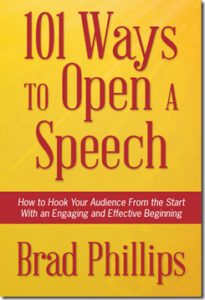 101 Ways to Open a Speech by Brad Phillips: The opening moments of a presentation are critical to its overall success. People form opinions about speakers quickly, and once they do, their first impressions can prove difficult to reverse. This book will introduce you to a broad range of speech starters, using dozens of real-life examples and original suggestions. You will find opens intended to surprise, persuade, motivate, engage, and amuse your audiences. You can read the full introduction using Amazon’s “Look Inside” feature here.
101 Ways to Open a Speech by Brad Phillips: The opening moments of a presentation are critical to its overall success. People form opinions about speakers quickly, and once they do, their first impressions can prove difficult to reverse. This book will introduce you to a broad range of speech starters, using dozens of real-life examples and original suggestions. You will find opens intended to surprise, persuade, motivate, engage, and amuse your audiences. You can read the full introduction using Amazon’s “Look Inside” feature here.
THE PSYCHOLOGY OF PUBLIC SPEAKING
Influence: Science and Practice by Robert B. Cialdini: There’s a reason this book has sold more than two million copies. Dr. Cialdini explains six key principles of persuasion, including the Reciprocity Rule, the Consistency Principle, and Social Proof. The human truths Cialdini explores should change the way you speak to audiences—and the way you issue your call to action. Ignore these rules at your peril.
Brain Rules: 12 Principles for Surviving and Thriving at Work, Home, and School by John Medina: Did you know that “multitasking” is a myth? Or that a speech that begins with details may be doomed to failure? Or that it may take years before information makes it to our brain’s long-term storage? All of those facts—and dozens more like it in this book—are critical to understanding the best way to present information to an audience. This is a fun book to read that will not only change your approach to public speaking, but to communication in general.
BODY LANGUAGE
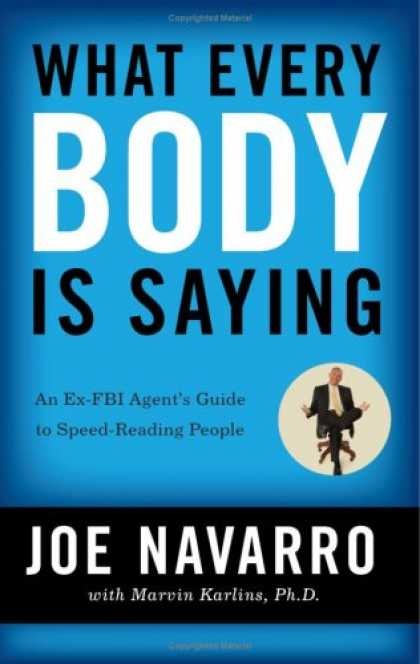
What Every BODY Is Saying: An Ex-FBI Agent’s Guide to Speed-Reading People by Joe Navarro: Reading body language is notoriously difficult. Sure, some “tells” are more certain than others, but even rather obvious tells usually require other, complementary tells—known as clusters—in order to accurately assess their meaning. That’s why I so thoroughly enjoyed this book, which is filled with all of the responsible caveats but is still an easy read full of fascinating tidbits. Navarro rests his conclusions on the most recent science, but impressively avoids the pitfall of weighing down the book with dense prose. (Read my full review here, and five body language tips from Navarro’s book here.)
The Definitive Book of Body Language by Barbara and Allan Pease: A terrific starter’s guide to body language that covers all of the basics—gestures, eye contact, and deceit signals—and some unexpected material, including the hidden meaning of certain seating arrangements, physical space, and courtship displays. An easy-to-read and highly accessible book.
CRISIS MANAGEMENT
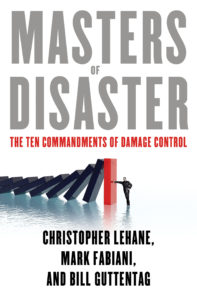 Masters of Disaster: The Ten Commandments of Damage Control by Christopher Lehane, Mark Fabiani and Bill Guttentag: Preparing in advance for crisis is more important today than ever before. Masters helps readers do that by detailing “Ten Commandments” of damage control, the purpose of which are to help restore trust to companies in crisis. But the greatest strength of this book is its case studies. The authors went into great detail on numerous recent scandals—ranging from those affecting Toyota, British Petroleum, Penn State University, Tiger Woods, baseball’s steroid users, and a few politicians. (Read my full review here, and an excerpt here.)
Masters of Disaster: The Ten Commandments of Damage Control by Christopher Lehane, Mark Fabiani and Bill Guttentag: Preparing in advance for crisis is more important today than ever before. Masters helps readers do that by detailing “Ten Commandments” of damage control, the purpose of which are to help restore trust to companies in crisis. But the greatest strength of this book is its case studies. The authors went into great detail on numerous recent scandals—ranging from those affecting Toyota, British Petroleum, Penn State University, Tiger Woods, baseball’s steroid users, and a few politicians. (Read my full review here, and an excerpt here.)
Damage Control: The Essential Lessons of Crisis Management by Eric Dezenhall and John Weber: This book got a lot of attention upon its original release, as it gleefully tore much of the prevailing crisis communications “wisdom” to shreds. Among other memorable moments, the authors discuss why “getting all of the information out early” is an often-impossible task, why sometimes companies have to do reporters’ jobs for them, and why the oft-cited Tylenol “best practices” crisis response is badly outdated. If you like hearing a smartly argued counter argument, this book’s for you.
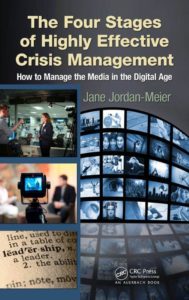 The Four Stages of Highly Effective Crisis Management: How to Manage the Media In the Digital Age by Jane Jordan-Meier: Jane’s straightforward prose, expert sourcing, relevant data and instructive case studies make this detailed book an easy read. Her international perspective (she cites cases in Australia, Great Britain, the Netherlands, Canada, and the United States) makes clear just how universal these crisis communications truths are. (You can read excerpts here.)
The Four Stages of Highly Effective Crisis Management: How to Manage the Media In the Digital Age by Jane Jordan-Meier: Jane’s straightforward prose, expert sourcing, relevant data and instructive case studies make this detailed book an easy read. Her international perspective (she cites cases in Australia, Great Britain, the Netherlands, Canada, and the United States) makes clear just how universal these crisis communications truths are. (You can read excerpts here.)
MEDIA TRAINING
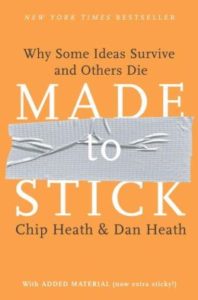 Made to Stick: Why Some Ideas Survive and Others Die by Chip and Dan Heath: The Heath Brothers practice what they preach. Two years after reading their book (for the first time), I still remember many of the anecdotes they shared; those case studies make their underlying and more substantive points even stickier. Their SUCCESs formula is an easily-remembered way to create more effective messages. This is not a “media training book,” but I’ve included it in this section since much of their advice can be applied brilliantly to your media interactions.
Made to Stick: Why Some Ideas Survive and Others Die by Chip and Dan Heath: The Heath Brothers practice what they preach. Two years after reading their book (for the first time), I still remember many of the anecdotes they shared; those case studies make their underlying and more substantive points even stickier. Their SUCCESs formula is an easily-remembered way to create more effective messages. This is not a “media training book,” but I’ve included it in this section since much of their advice can be applied brilliantly to your media interactions.
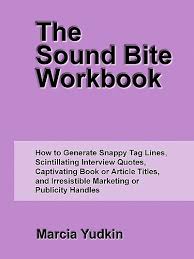 The Sound Bite Workbook by Marcia Yudkin: In her short workbook, Marcia Yudkin offers some terrific advice to help spokespersons create the all elusive “sound bite.” You can use it to create captivating quotes for the media, presentations, website taglines, and marketing messages. This book is only available for the Kindle—and at $2.99, it’s a steal.
The Sound Bite Workbook by Marcia Yudkin: In her short workbook, Marcia Yudkin offers some terrific advice to help spokespersons create the all elusive “sound bite.” You can use it to create captivating quotes for the media, presentations, website taglines, and marketing messages. This book is only available for the Kindle—and at $2.99, it’s a steal.
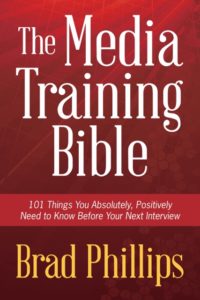 The Media Training Bible: 101 Things You Absolutely, Positively Need to Know Before Your Next Interview by Brad Phillips: Okay, so this is my book. I’m not going to review it myself, since I have an obvious conflict of interest. The book is organized as 101 two-page lessons and covers message development, media interviewing, body language and attire, and crisis communications. I hope you’ll consider adding it to your book collection. (You can read independent reviews here and view free sample lessons here.)
The Media Training Bible: 101 Things You Absolutely, Positively Need to Know Before Your Next Interview by Brad Phillips: Okay, so this is my book. I’m not going to review it myself, since I have an obvious conflict of interest. The book is organized as 101 two-page lessons and covers message development, media interviewing, body language and attire, and crisis communications. I hope you’ll consider adding it to your book collection. (You can read independent reviews here and view free sample lessons here.)
Which books have I missed? Please leave your favorites in the comments section below.
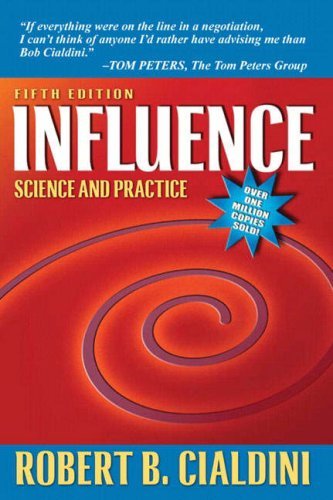
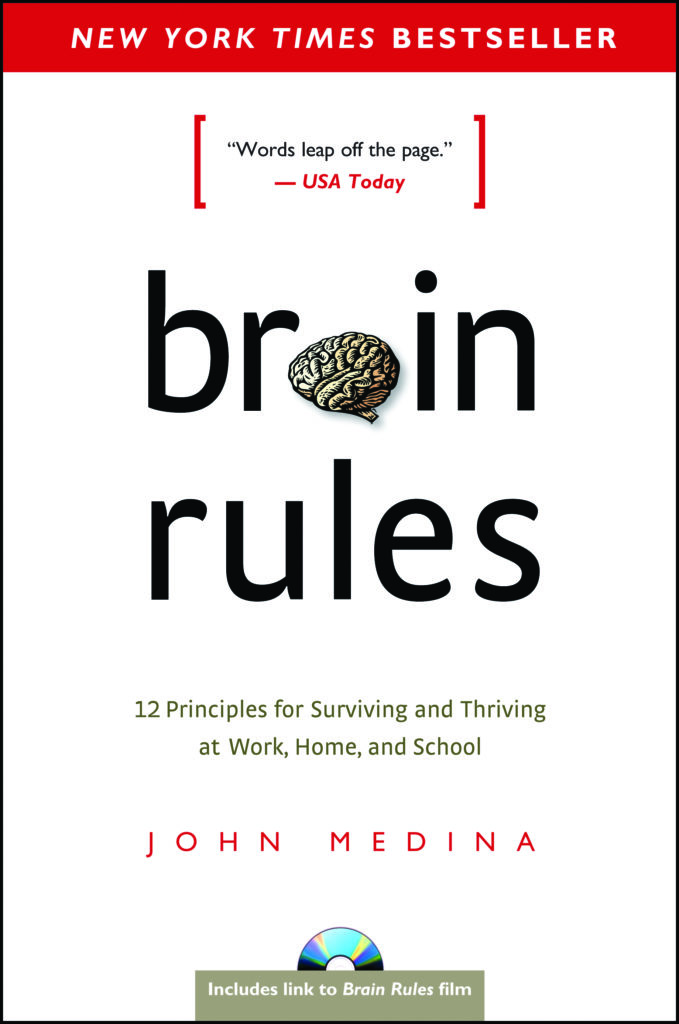
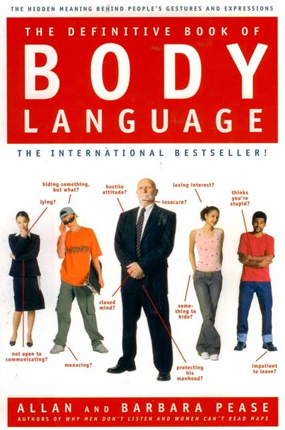
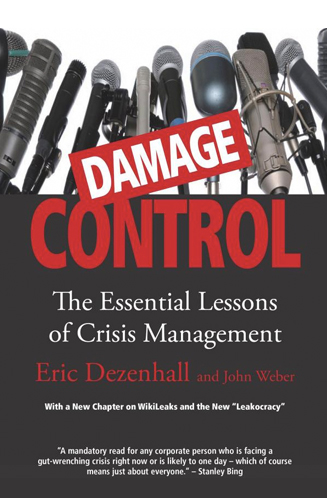
Would also suggest “You Can’t Lie to Me” by Janine Driver. She has other books as well. Having heard her speak, and seen her cover high profile trials, I know she is the real deal. Some amazing insights on how to read, and how to avoid misreading people as well as being aware how you come across.
Roger —
Thank you very much for that suggestion! I hadn’t heard of the book, and look forward to checking it out. I’m always looking for greater insights into body language.
Best wishes,
Brad
Brad: would also recommend Steven Fink’s recent book “Crisis Communications.” Recently finished reading it. He shares some outstanding crisis comms principles with recent real-world examples.
Three of my favorite books are on your list:
* Presentation Zen
* Influence
* Presenting to Win (Years ago I was lucky enough to attend a 3 day workshop with Jerry Weissman – Extraordinary!)
Because of your updated post, I bought Presentation Zen Design (didn’t know about this) & What Every Body is Saying (which has been on my reading list for a long time.) Thanks for the recommendations.
Hi Michele,
I’m so glad you found those recommendations useful!
You’ll love Presentation Zen Design. It goes into more granular detail about fonts, color, and slide design, so it’s the perfect compliment to Garr Reynolds’s first book. I also enjoyed What Every BODY Is Saying; although a few of the points felt rather obvious, many other points contained new information and made the entire book a delight to read.
Please let me know what you think when you’ve finished them! And thank you for reading the blog.
Best,
Brad
J. Edward Chamberlin’sbook If This is Your Land, Where Are Your Stories? Finding Common Ground is one I would highly recommend. It is about the history and importance of our legends and stories and why there is a tradition of storytelling.
Chamberlin says “We need to understand our stories because our lives depend upon it.”
Gillian,
Thank you very much for that recommendation! I’ll add that to my reading list.
Thanks for reading,
Brad
I know it is self-serving, but my book “Keeping Cool on the Hot Seat: Dealing Effectively with the Media in Times of Crisis” has been recognized by many as a good primer for organizational spokespersons. It has been used by over a dozen colleges as a text or supplemental reading material. Syracuse University has made it required reading for a graduate course in crisis communications for nine years now. The fifth edition was published in 2011 in order to cover more recent examples of crises that have occurred since it was originally published in 2001.
Here are two more that may be of interest, published since you compiled this great list:
“The Orderly Conversation: Business Presentations Redefined” (theorderlyconversation.com) For how business people really need to speak; not “Public Speaking 101.”
“Living Proof: Telling Your Story to Make a Difference” (www.livingproofadvocacy.com) The first guide to using personal stories to be a powerful advocate or spokesperson for a cause or organization.
Hope you can check them out. Thanks for being such a great resource.
[…] RT @MrMediaTraining: Our recommended reading list for public speaking, media training: bit.ly/1ayv0JR […]
I’m interested in honing my communication & presentation skills to be able a dynamic presenter in front of large audiences as well as moderate panel discussions. I think Media training would serve well in support of that goal.